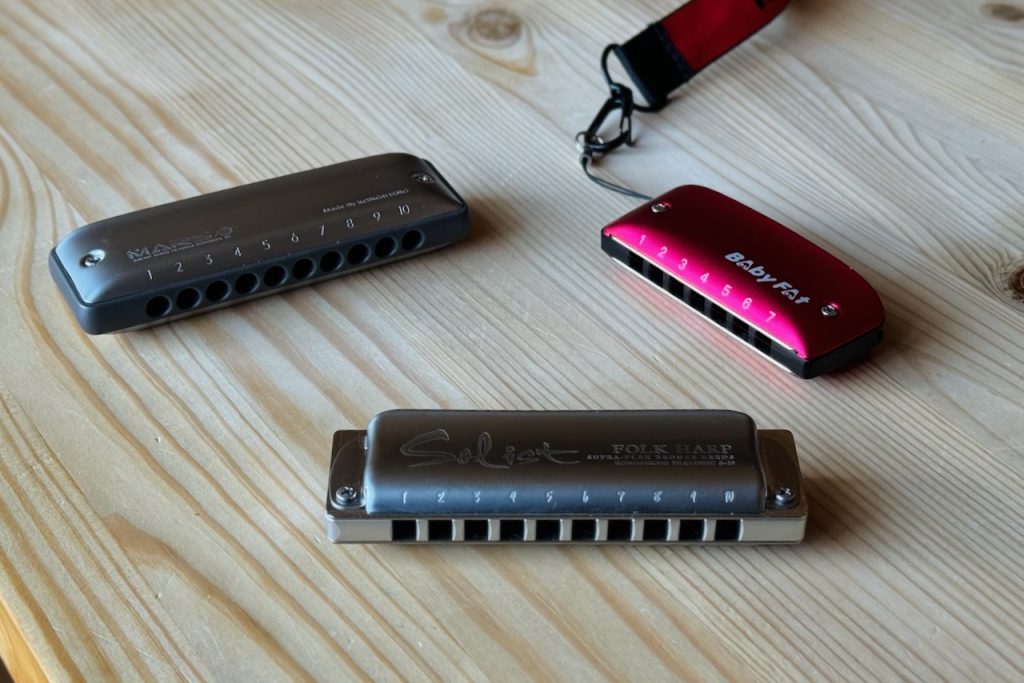
Kongsheng is a Chinese company known for producing good quality instruments with a very good price/quality ratio.
We had heard quite a bit of the Kongsheng Mars from the American harmonica community, with a general statement that this harmonica was very good.
Moreover, the company produces the reedplates and covers for the excellent Arkia Origin.
So we were eager to review their instruments. We contacted Arthur who kindly sent us a Solist for review. As we really liked this instrument and were intrigued by the Baby Fat and the Mars, we decided to buy and also review these two ones.
Konsheng is not directly available in France (you can buy through some vendors on amazon but they are expensive), so we ordered on http://www.kongshengmusic.com/. The order was easy to make and the harmonicas arrived quite promptly. Very good service!
Mars (32.99 $)
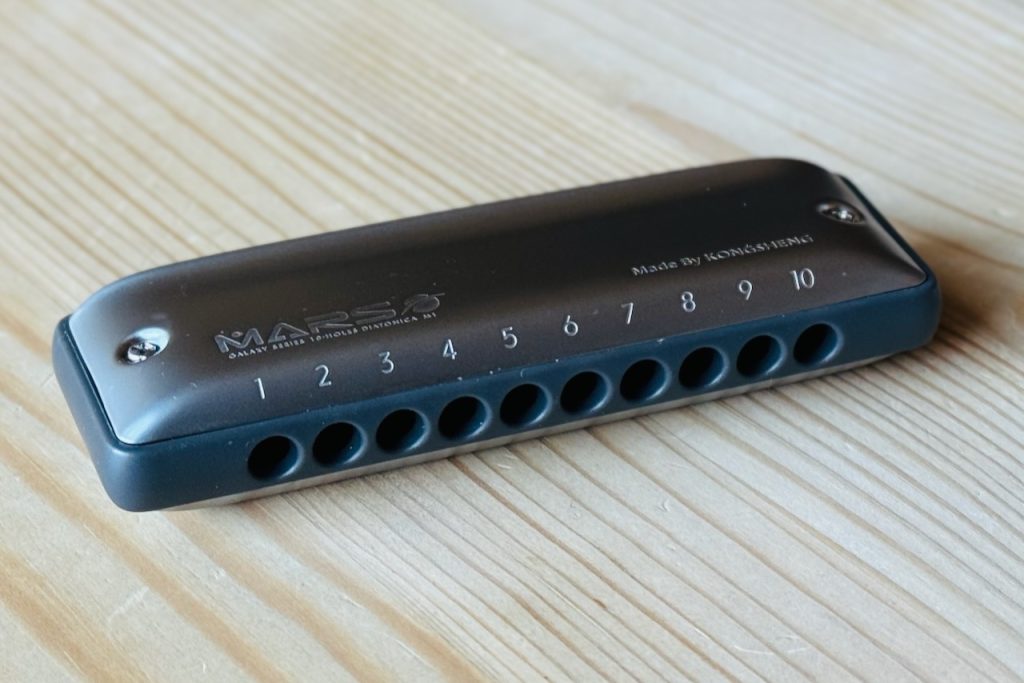
The Mars has an attractive look with its rounded holes, not usual for diatonics. We like this design, a bit similar to the Seydel Session.
Out of the box, the response is not optimum but the 4°, 5° and 6° are playable. This is quite amazing for an instrument of that price. It seems Konsheng has understood the needs of modern players and decided to gap their instrument a bit tighter than the other companies.
Once gapped and “nail polished”, all the overblows and overdraws are there but the response still is not optimum. The sound is a bit dull and with limited projection. This is very similar to the Seydel Session. When we remove the covers and play the instrument without them, the response clearly is better, similar to the Seydel Session Steel. So it seems the loss of airtightness is due to the jonction between the comb and the covers.
So despite its attractive look, this type of design (covers covering the whole length of a recessed comb) doesn’t seem to be optimum for airtightness and response and we would not recommend the Mars for Chromatic playing (the Solist clearly is the one we recommend for that type of playing, see below).
But we saw there was a new Mars M2 with Acrylic Comb and we were told this new comb had several differences.
We definitely had to try it! And Arthur from Konsheng kindly send us one for review:
Mars M2 (54,98$)
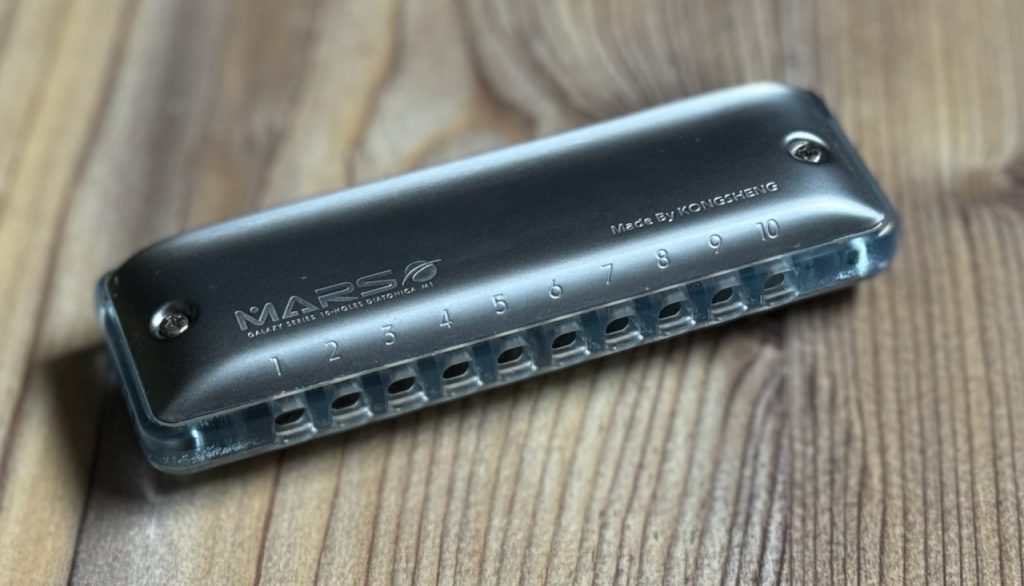
The mars M2 shares the same design as the Mars but with a completely different comb. The comb is made of transparent blue acrylic with “shared round” holes. And boy, this new comb changes everything!
The playability is excellent, far better than the Mars’. Out of the box, the overblows are there and after gap setup and nail polish the Mars M2 all the overblows and overdraws come easily.
The sound is brighter than the Mars’, with better projection but keeps a mellow flavor. It may sound weird, but this is how a “quiet” harmonica should sound to me: mellow but with good projection.
So the M2 clearly is a great upgrade of the Mars design, which fixes the defaults of this type of design (covers covering the whole length of a recessed comb). Great job Konsheng!
The price is a bit high compared to the Lighting (that we identify as Kongsheng’s high end harmonica), though.
Bluebird (34,99$)
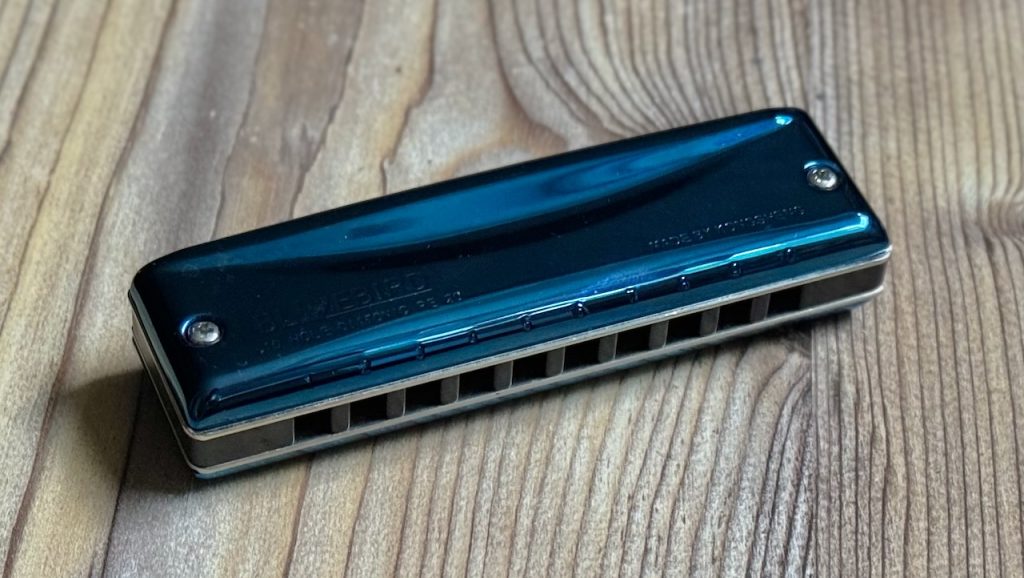
The Bluebird is Konsheng take on the Suzuki Pro Master design. It has a black ABS comb and blue stainless steel covers.
The embouchure is a bit bigger than the Mars’. The playability is excellent, the sound is brighter, richer and with a bit more projection than the Mars M2. Once setup, the chromaticity is fully there: overblows, overdraws and bends come easily and are “shapeable”. Their sound is
The bluebird really is a big bang for the buck. For less than 35$, you’ve got a nice sounding instrument, fully playable chromatically (once setup).
Baby Fat (24,99$)
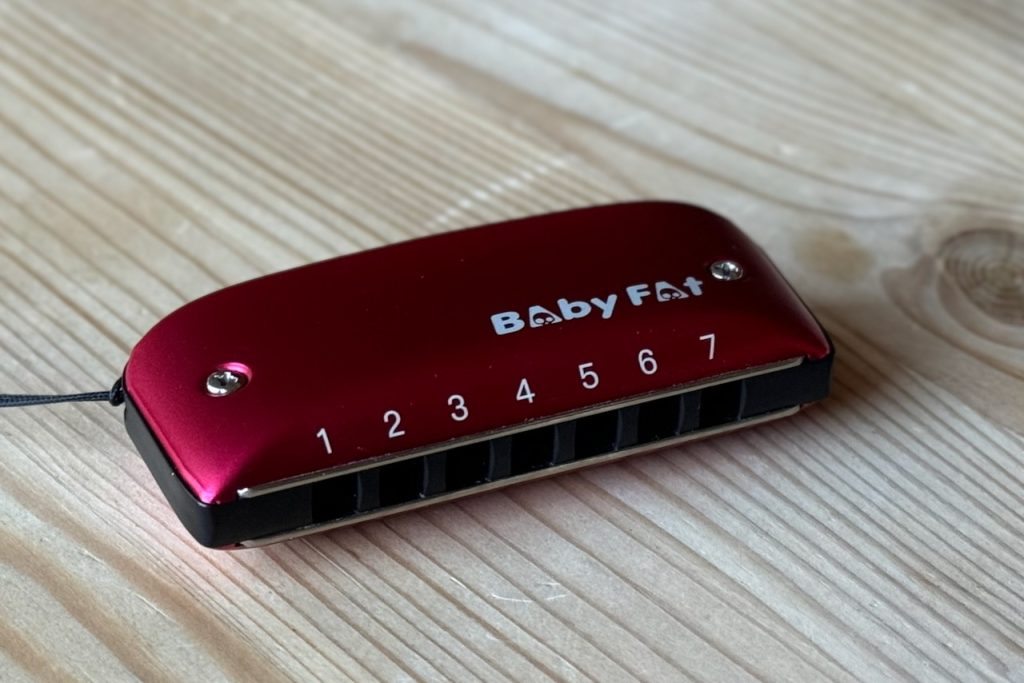
Seydel has been producing the Big Six for years. This little harp has only 6 holes and is smaller in width than a regular diatonic. It is fully playable and has a good sound projection. This limitation to 6 holes kind of illustrate (for us) the fact that most blues harmonica players never venture after the 6th hole when playing in traditional 2nd position, which can be considered a shame.
The Kongsheng Baby Fat goes one hole further, with 7 holes. And this additional hole does make a difference when playing melodies. But what’s the playability of this little beast?
The dimensions of the Baby Fat are only slightly bigger than the Big Six. The spaces between the holes are just a tight smaller.
Out of the box, the instrument is quite playable for natural notes and bends. Only the 4° is obtainable. This is similar to most instruments from the other brands.
After a first gap setup, the 5 and 6 overblows are difficult to sustain. The blow reeds produce a squealing sound very quickly. Closing the gaps to the max (while still being able to play the natural notes) is not enough to remove this squealing. This situation is similar to the one encountered with the Hohner Meisterklass. And the fix is actually the same: a bit of nail polish on the 5th and 6th blow reeds solve the problem. It requires to unmount the reed plates but the operation is not difficult to do.
Once done, the Baby Fat is fully playable chromatically! All the notes are easy to obtain and the sound is good. The response is also very good, which makes us think the recessed comb of the Mars (associated to this type of covers) is the culprit in terms of response.
When playing a little more the Baby Fat, the only problem is … its size. It is so small that it’s less easy to hold and play than a regular diatonic.
A regular diatonic is small enough to fit in a pocket. Is there a real need for an even smaller harmonica? Only the customers can answer this question.
But for sure the Baby Fat plays quite well and definitely is fun to carry with its necklace.
Konsheng Solist (44,99$)
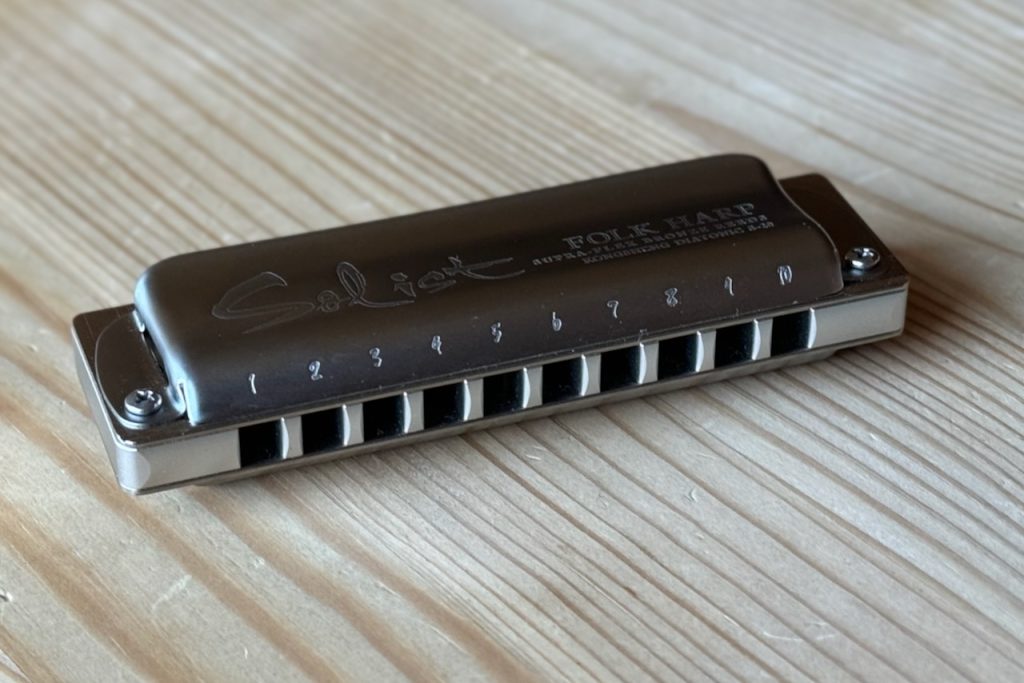
The Solist is Konsheng High-End harmonica. Made of metal, with its classical design, this definitely is a “Tin Sandwich”! The covers have a beautiful finish.
The first blows in this harmonica brings a big surprise. All the overblows and the 7° are playable! The 7° can’t be maintained without squealing, though (which is normal). So this still needs some gapping refinement and nail polish to fully unlock its chromaticity, but this out of box playability is remarkable.
Once setup, the Solist is very easy to play. All the notes respond well and are easy to shape. The response is very good. The sound is very bright and with very good projection, comparable to the Seydel Lighting, just a bit less bright, and actually more to our liking.
It really is a pleasure to play melodies necessitating overblows and bends on this instrument.
So the Konsheng Solist definitely is a great instrument for chromatic playing, at a very affordable price. We highly recommend it!
Laurent Vigouroux